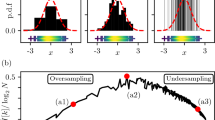Abstract
Natural images were subjected to patchwise Fourier analysis, and the local amplitude and phase spectra were swapped between different images. When the patches were large relative to the image size, the appearance of the reconstructed image was similar to that of the image from which the phase information had been derived, in agreement with previous reports of phase-dominance in the global Fourier Transform. However, when the patch size was made sufficiently small, the appearance of reconstructed images was dominated by amplitude rather than phase. This was not simply due to the DC component of the amplitude spectrum. Prior low-pass filtering of the images enhanced the dominance of amplitude information in the patchwise transform. We conclude that patchwise-reconstructed images contain two quite distinct kinds of information for the human observer. The first is the positional information (“local sign”) of the patches themselves; the second is the textural information within patches, which is dominated by amplitude rather than phase. The reason why the global Fourier Transform is dominated by phase is that in the absence of any other information about local sign, phase is necessary to reconstruct localised features such as edges.
Similar content being viewed by others
References
Field D (1987) Relations between the statistics of natural images and the response properties of cortical cells. J Opt Soc Am A 4:2379–2394
Hayes A, Morrone MC, Burr DC (1986) Recognition of positive and negative bandpass-filtered images. Perception 15:595–602
Hubel DH, Wiesel TN (1974) Uniformity of monkey striate cortex: a parallel relationship between field size, scatter, and magnification factor. J Comp Neurol 158:295–305
Hubel DH, Wiesel TN (1977) Ferner Lecture: functional architecture of macaque monkey visual cortex. Proc R Soc London Ser B 198:1–59
Julesz B (1962) Visual pattern discrimination. IRE Trans Inf Theory IT-8:84–92
Julesz B (1975) Experiments on the visual perception of texture: Sci Am 232:34–43
Julesz B (1980) Spatial-frequency channels in one-, two-, and three-dimensional vision: variations on a theme by Bekesy In: Harris CS (ed) Visual coding and adaptability. Lawrence Erlbaum, New Jersey, pp 263–316
Julesz B, Gilbert EN, Shepp LA, Frisch HA (1973) Inability of humans to discriminate between visual textures that agree in second-order statistics—revisited. Perception 2:391–405
Kolers PA, Duchnicky RL, Sundstroem G (1985) Size in the visual processing of faces and words. J Exp Psychol 11:726–751
Landy MS, Cohen Y, Sperling G (1984) HIPS: A Unix-based image processing system. Comput Vision Graph Image Process 25:331–347
Morrone MC, Burr DC (1988) Feature detection in human vision: a phase-dependent energy model. Proc R Soc London Ser B 235:221–245
Oppenheim AV, Lim JS (1981) The importance of phase in signals Proc IEEE 69:529–541
Piotrowski LN, Campbell FW (1982) A demonstration of the visual importance and flexibility of spatial-frequency amplitude and phase. Perception 11:337–346
Pollen DA, Ronner SF (1981) Phase relationships between adjacent simple cells in the visual cortex. Science 212:1409–1411
Robson JG (1983) Frequency domain visual processing. In: Braddick OJ, Sleigh AC (eds) Physical and biological processing of images. Springer, Berlin Heidelberg New York, pp 73–87
Shapley R, Caelli T, Grossberg S, Morgan MJ, Rentschler I (1990) Computational theories of visual perception In: Spillman L, Werner JB (eds) Visual perception: the neurophysiological foundations. Academic Press, New York, pp 417–447
Wegmann B, Zetzsche C (1990) Visual system based polar quantization of local amplitude and local phase of orientation filter outputs. In: Rogowitz BE, Allebach JP (eds) Human vision and electronic imaging: models, methods and applications. Proc SPIE 1249:306–317
Author information
Authors and Affiliations
Rights and permissions
About this article
Cite this article
Morgan, M.J., Ross, J. & Hayes, A. The relative importance of local phase and local amplitude in patchwise image reconstruction. Biol. Cybern. 65, 113–119 (1991). https://doi.org/10.1007/BF00202386
Received:
Accepted:
Issue Date:
DOI: https://doi.org/10.1007/BF00202386




